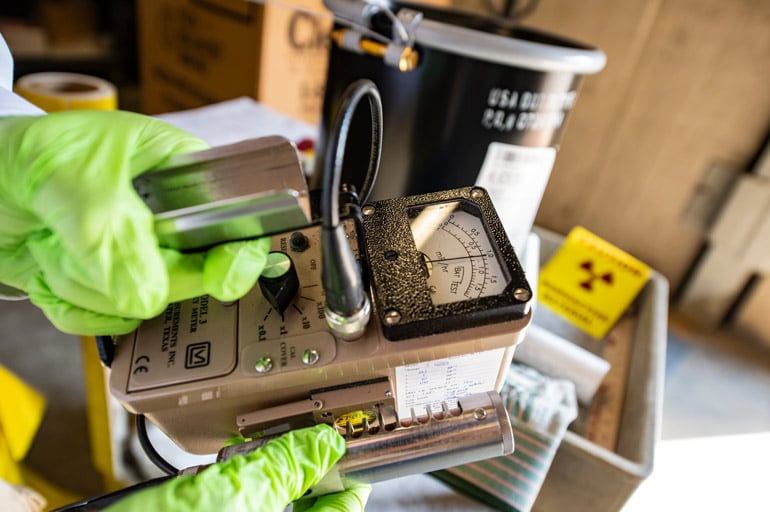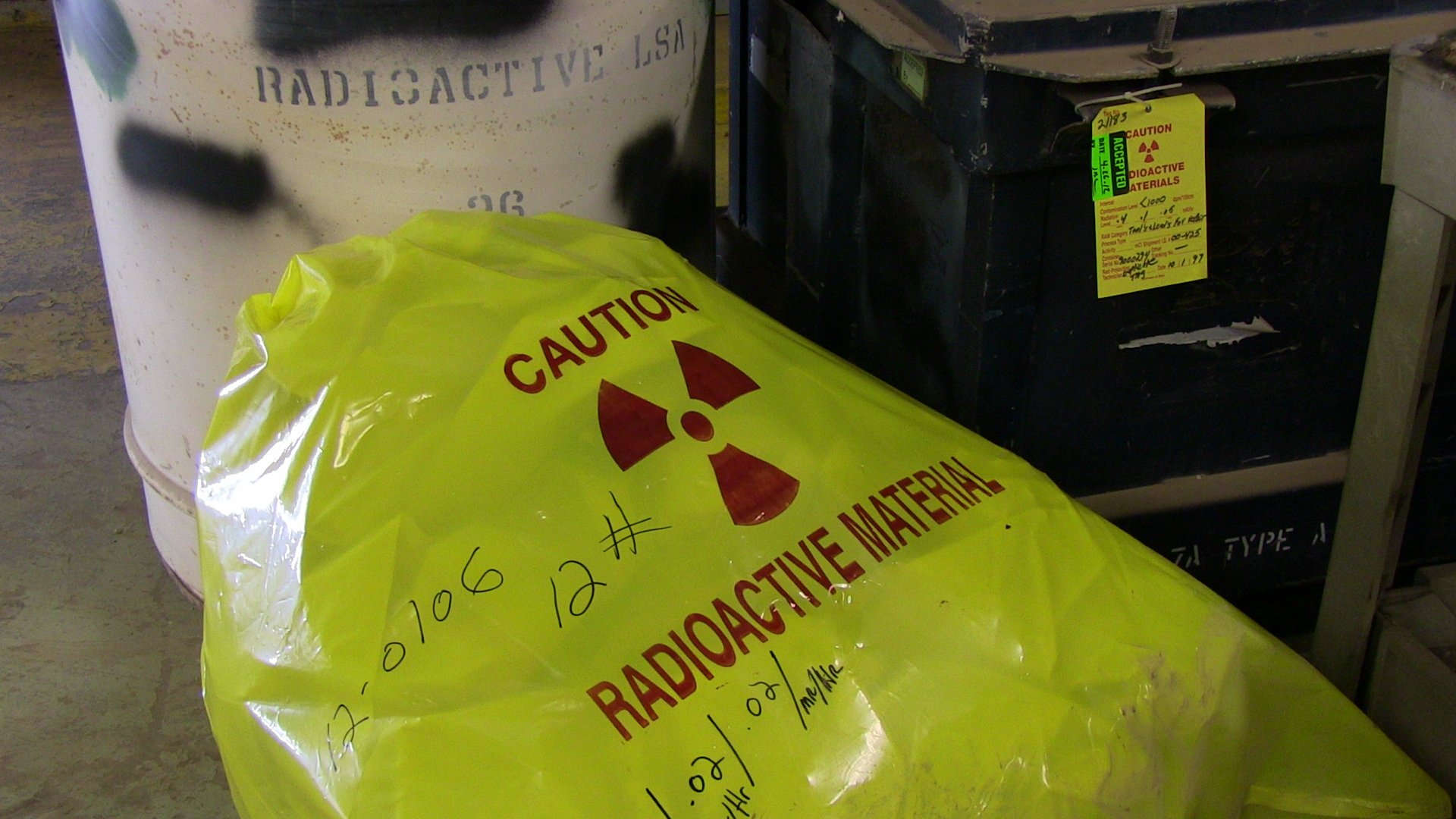When most people think of “radioactive” they picture big cooling towers from nuclear power plants, atomic bombs, or a variety of apocalyptic movies. But radioactive or nuclear materials are used in a wide range of everyday products and processes. From killing microbes, preventing infection, and cancer treatment, to smoke detectors, self-powered tritium exit signs, watches, and older televisions and monitors, radioactive material can be found in many places you wouldn’t normally expect.
What is low-level radioactive waste?
Products and processes in everyday life that utilize radioactive material also generate radioactive waste. The EPA defines low-level radioactive waste (LLRW) as materials that contain very small concentrations of radionuclides. The level of radiation is low enough to not require all the safety measures needed to manage higher activity radioactive material.
LLRW material, however, can still be potentially dangerous to humans, so it is highly regulated by federal and state government agencies. Examples of LLRW include:
- Dry active waste (DAW) like gloves, rags, wipes, clothing, glassware, plastic ware, needles and syringes, and more
- Sealed radioactive sources from various instrumentation, gauges, and other detection devices
- Contaminated equipment, including duct work, lab hoods, carts, and pumps
- Certain types of infectious or biological waste like contaminated animal carcasses, animal bedding, and blood
- Naturally occurring materials that have radiation levels higher than background radiation
Who is allowed to handle LLRW?
In order to handle LLRW or certain devices and materials, facilities have to obtain a license from the Nuclear Regulatory Commission (NRC) or their state authority. Depending on the material in question and the amount of it, specific licenses may be issued for the use, handling, and disposal of the radioactive devices or substances.

LLRW licenses require that certain precautions and safety standards are met in order for a facility to have the materials onsite. If individual states have their own LLRW regulations and licensing requirements, they must be compatible with NRC guidelines.
How to handle low-level radioactive materials
As an end user of devices containing radioactive materials, like certain gauges, instruments, tritium exit signs, and others, you have a number of responsibilities. When you buy these products from a manufacturer to use on site, they are either under your specific license or under a general license, depending on how much radioactive material they contain.
When you receive the products under a general license, they typically come with a pamphlet or insert that explains your responsibilities as the end user. These documents will usually outline requirements you have to complete for the device, including:
- Routine leak tests and inspections (every six months, year, or three years depending on the manufacturer and what the item is)
- Checking labels to make sure they remain clearly legible
- Requirements for recordkeeping
- Whether you need to register your possession of the device
Managing LLRW
Low-level waste is often stored onsite by licensees until the amount is large enough to ship to an LLRW treatment or disposal site, or until it has decayed away to the point where it can be disposed of as non-radioactive waste. In order to decay waste onsite, it must be specifically allowed in your license and can only be done with isotopes that have a half life of fewer than 120 days.

While the waste is in the possession of a licensee, there are several steps they need to take to remain compliant:
- Assess the waste and provide a description that includes quantities, form, isotopes, and locations.
- Create a plan for the protection of employees, visitors, and the general public, including putting together a waste transportation, treatment, and disposal plan that identifies a licensed transporter and permitted disposal facility.
- Ensure that the area where the waste is stored is properly labeled with the radioactive trefoil, the words “Caution, Radioactive Material,” the isotopes present, radiation levels, and a description of the materials.
- Maintain cradle to grave documentation of the radioactive waste.
NRC licenses also require that all workers who may be exposed to a radiation dose greater than 100 millirem per year must receive radiation safety training. This training usually includes proper handling, safe and secure storage, waste characterization, record keeping, exposure reporting procedures, and disposal methods.
It’s important to remember that different states have different requirements, so it’s up to the licensee to learn and understand all of the local LLRW regulations.
Download this guide to handling common low-level radioactive waste issues to learn more.
Offsite treatment and disposal options
Disposal of LLRW usually means placing some portion of it into a landfill within a licensed and permitted facility. The landfill must ensure that the waste is immobilized and will not release into the environment. Before the waste can be placed into the landfill, however, it has to be treated.
Treatment involves reducing the volume of the waste through compaction and cutting or sizing to limit void space and consolidating it with similar types of waste. Water is separated from the radioactive material via scrubbers and filters, leaving only solid residues. Incineration or thermal methods are also used to separate and capture the radioactive materials. Decontamination involves removing radioactivity from surface area objects and concentrating the radioactive materials into a smaller volume. Once the waste is properly treated or decontaminated, it can be safely recycled, reused, or sent to an approved landfill site.
Building a successful LLRW program
Managing an organization’s low-level radioactive waste (LLRW) can be a challenge. And if you are new to the field, or even if you have been managing LLRW for years, it can be overwhelming. It is important to find a vendor that provides efficient, cost effective ways to manage LLRW that comply with all NRC, EPA, DOT, state, and Waste Acceptance Criteria standards. If you'd like to learn more about what a successful LLRW program looks like, check out our webinar.


